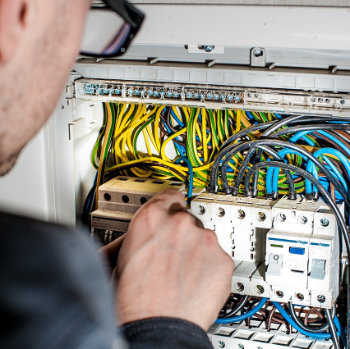Energy efficiency retrofit training videos

|
| Poor quality design and installation of energy efficiency measures when refurbishing homes can prevent the expected energy and cost savings from being achieved, and increase moisture, air quality and other problems. A series of training videos to raise awareness of key technical refurbishment topics – aimed at surveyors, designers and others involved in domestic refurbishment projects – is now freely available. |
With around 15% of carbon emissions being accounted for by 25 million UK homes, domestic energy efficiency measures can help to meet climate change targets, as well as reducing fuel poverty, improving thermal comfort and increasing security of supply.
The government has set a target of improving the Energy Performance Certificate (EPC) rating of all homes to Band C by 2035. Policy initiatives to this end include the Energy Company Obligation (ECO), which has led to the installation of insulation and heating systems in 1.8 million low-income and vulnerable households.
There has been concern, however, that the standards of design and installation of these energy saving features has often been inadequate, so they may not deliver the expected savings and could increase moisture problems, fire risks and poor air quality. This was a driver behind the Each Home Counts (EHC) Review, which recommends a quality mark and supporting technical codes of practice and standards to cover the design and installation of energy efficiency measures. Key to this is the upskilling and training of those delivering these measures.
A new BRE Domestic Retrofit Training Course consisting of six, 20-30 minute modules is now freely available. It has been designed to raise awareness of a number of technical refurbishment topics:
- Airtightness – understanding airtightness and how it is tested in a building, identifying common air leakage paths and sealing the building.
- Building physics – the movement of heat, moisture and air through the dwelling, and the relationship of these with the building’s occupants.
- Exposure – assessing external wall exposure, particularly the effects of wind-driven rain.
- External wall insulation – detailed overview of the various stages involved in retrofitting a property with external wall insulation.
- Moisture – guidance on recognising what is required to assess a dwelling for moisture risk using the whole house approach.
- Unintended consequences – the causes of defects and underperformance, and the processes for minimising them.
The course is aimed at the two key roles of surveyor and designer, but it is also relevant to others involved in domestic refurbishment projects – clients, materials providers, installers, site managers and assessors. There are cross linkages between the modules as well as extensive referencing to supporting BRE guidance that provides further technical detail.
The course is consistent with the EHC review recommendations and the proposed technical direction of PAS 2035 Code of practice for the energy retrofit of buildings (and associated standards), which is now being developed. As well as introducing the key technical issues involved, it provides a first step to further training to become accredited under PAS 2035, which will enable practitioners to display the EHC Quality Mark.
With funding from the BRE Trust, the course material has been prepared by BRE experts and the training modules made available by the BRE Academy. Users of the modules are invited to provide feedback on the content and the method of delivery so they can be improved and developed further.
Further information and access to the training course are available on the BRE Trust Knowledge Hub at https://www.bretrust.org.uk/knowledgehub/2019/12/11/domestic-retrofit-training/
[edit] Related articles on Designing Buildings Wiki
- Building Research Establishment.
- BRE articles on Designing Buildings Wiki.
- BREEAM.
- Code for sustainable homes.
- Ecobuild 2016 - Making the business case for large scale retrofit investment.
- Energy efficiency of traditional buildings.
- Energy Performance Certificates.
- Fabric first.
- Home Energy Masterplan.
- Home Quality Mark.
- How to deal with retrofit risks.
- National Refurbishment Centre.
- New energy retrofit concept: 'renovation trains' for mass housing.
- PAS 2035.
- Refurbishment.
- Renovation.
- Renovation v refurbishment v retrofit.
- Retrofit.
- Retrofit coordinator.
- Retrofit, refurbishment and the growth of connected HVAC technology.
- Retrofitting solar shading.
Featured articles and news
Classroom electrician courses a 'waste of money'
Say experts from the Electrical Contractors’ Association.
Wellbeing in Buildings TG 10/2025
BSRIA topic guide updates.
With brief background and WELL v2™.
From studies, to books to a new project, with founder Emma Walshaw.
Types of drawings for building design
Still one of the most popular articles the A-Z of drawings.
Who, or What Does the Building Safety Act Apply To?
From compliance to competence in brief.
The remarkable story of a Highland architect.
Commissioning Responsibilities Framework BG 88/2025
BSRIA guidance on establishing clear roles and responsibilities for commissioning tasks.
An architectural movement to love or hate.
Don’t take British stone for granted
It won’t survive on supplying the heritage sector alone.
The Constructing Excellence Value Toolkit
Driving value-based decision making in construction.
Meet CIOB event in Northern Ireland
Inspiring the next generation of construction talent.
Reasons for using MVHR systems
6 reasons for a whole-house approach to ventilation.
Supplementary Planning Documents, a reminder
As used by the City of London to introduce a Retrofit first policy.
The what, how, why and when of deposit return schemes
Circular economy steps for plastic bottles and cans in England and Northern Ireland draws.
Join forces and share Building Safety knowledge in 2025
Why and how to contribute to the Building Safety Wiki.
Reporting on Payment Practices and Performance Regs
Approved amendment coming into effect 1 March 2025.
























